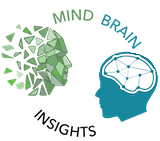The Memory Activation Method
The MA Method enhances projects in CNS biomarkers, AGI, knowledge representation, NLP and neurorobotics. Our current focus is BCI — including control of neuroprosthetics, cursors/computers, VR, and phones.
The method is based on a model of the subjective mind: a cognitive ontology (parts list), and its activity through space and time, in the brain. External influences on the mind — body, environment, situation (home, work social…), recent life events etc… — are also included.
The mind contains more information than recognized by brain science. Conscious & unconscious mental states and processes include sensation & perception, recognition, identification, understanding, thought, thinking, imagination, the self, emotion, motivation, belief, goals, attention, intention, prediction, motor control, language, inner speech, reward, pain & pleasure, and learning. This only scratches the surface.
Our model accounts not only for the above but also immediate perception and the “higher self”: such as truth, intuition, inspiration, creativity, wisdom, authenticity, love or compassion.
The model extends beyond cognitive neuroscience terminology such as “perceptual processing,” “executive function,” “reward” etc. They represent <3% of the total “mind space.” The good news is the other 97% can be defined (or summarized) accurately.
My Story
The current focus of Mind Brain Insights, LLC is to apply our mind/brain model and method to enhance the design, training, testing and use of BCI devices, such as motor neuroprosthetics.
17 years ago I started studying human consciousness and how it relates to the brain. What is the mind, exactly? How does it connect to the brain?
I enjoy science and philosophy and my intuition told me the problem was solvable. Even so I didn’t know much about the brain to start. Beginning with Eye and Brain by David Hubel, I read a number of books on neuroscience, cognitive neuroscience, phenomenology and related topics. I also began to study the literature on selected subtopics.
Gradually, while “standing on the shoulders of giants,” the model began to take shape.
I began to share my novel paradigm with brain scientists but had no luck. For one thing, new paradigms in science are historically difficult to understand, let alone evaluate. (For reasons why see FAQ)
As I refined the model I became more and more practical. I narrowed my focus to applied neuroscience. Here I could demonstrate the theory’s value. I investigated neuromarketing, bio-inspired AI and robotics, and CNS medicine (biomarkers) before turning my attention to BCI and neuroprosthetics.
